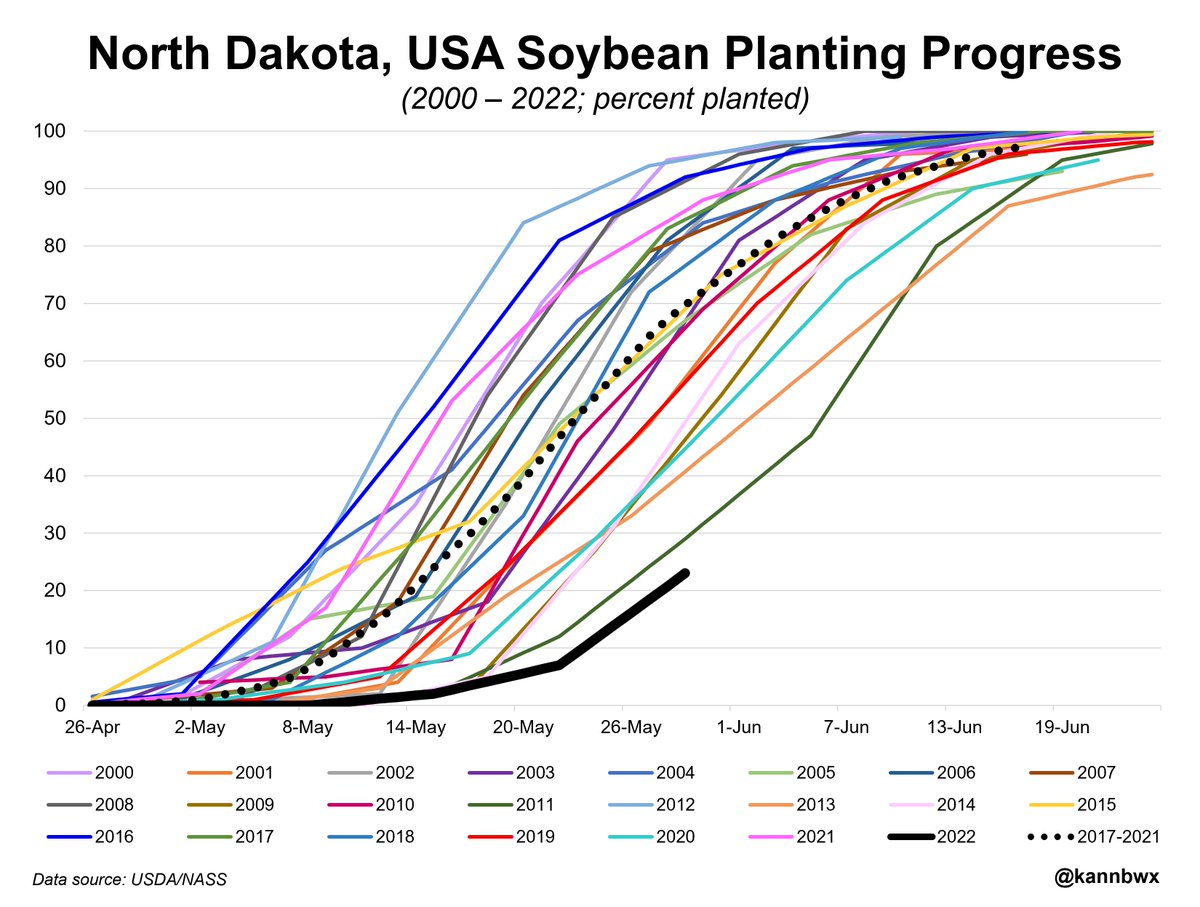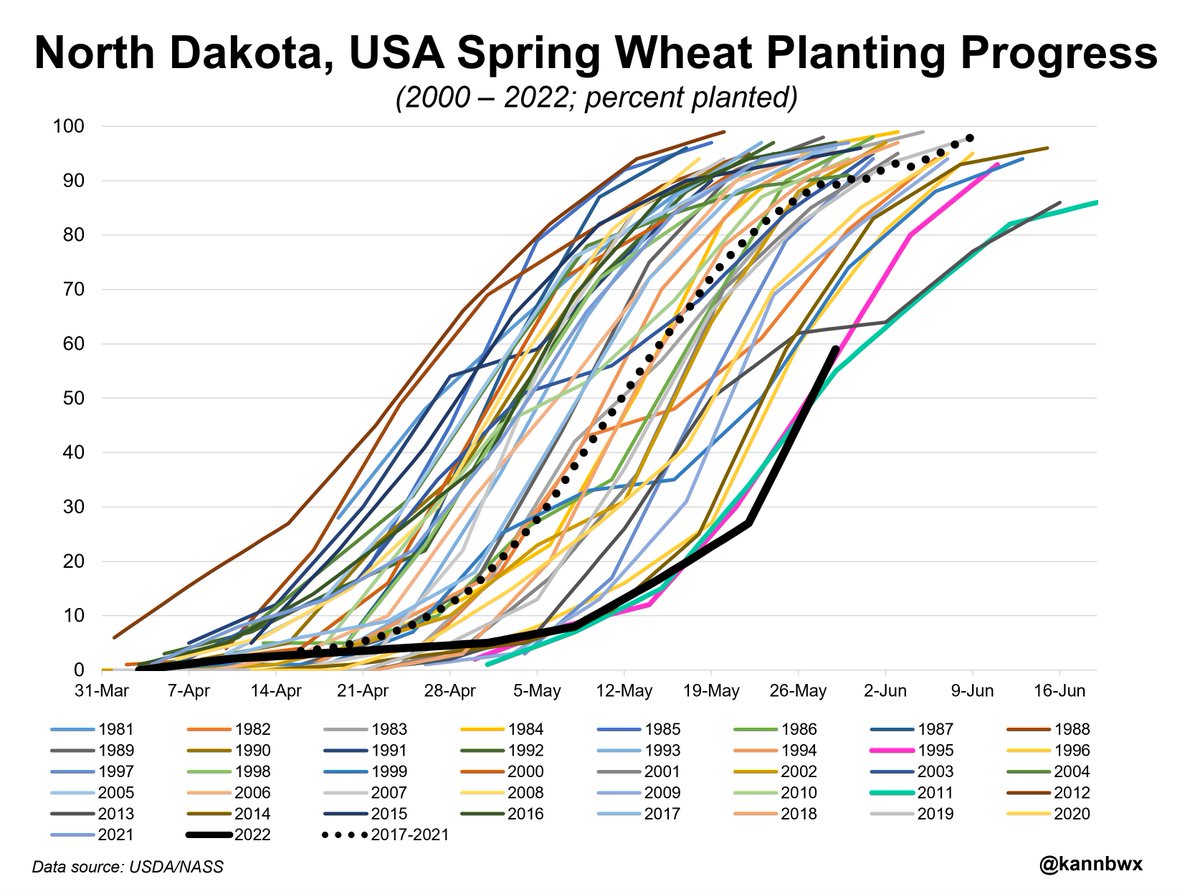🌽It's hard to tell 2023 (so far) apart from 2012 or 2013 on a new-crop #corn chart. Nearly identical.
But 2012 and 2013 are about to break up in a BIG way, and U.S. weather was the catalyst. Where 2023 heads depends on (much needed) Midwest rains in the coming weeks.
But 2012 and 2013 are about to break up in a BIG way, and U.S. weather was the catalyst. Where 2023 heads depends on (much needed) Midwest rains in the coming weeks.

Look at the 6-10 and 8-14 day U.S. weather outlooks from June 5, 2012 & 2023. Prices softened into June 2012 because weather outlooks weren't disastrous (yet). I'm not saying AT ALL (seriously) that 2012 is our eventual outcome, but I highly value reviews of past thinking. 



Can't leave out fund positioning when comparing years. They weren't bearish #corn in 2013 until July, but they weren't too bullish in June 2012 or 2013. Bit of a different story now, but funds covered shorts at the end of May, potentially carrying through early June? 

Lowdown on USDA WASDE June 2012:
▪️#Corn yield (simple linear long-term trend; 166 bu/acre) was unchanged from May
▪️12/13 stocks/use projected at 13.7% versus sub 7% in 11/12 (unch from May)
▪️#Corn yield (simple linear long-term trend; 166 bu/acre) was unchanged from May
▪️12/13 stocks/use projected at 13.7% versus sub 7% in 11/12 (unch from May)

If you're immersed into the 2012 analysis, remember that the current model USDA uses for its corn yield was employed in 2013. Therefore the lack of yield adjustments in June 2012 may or may not be relevant today. See pages 10-14 for more: ers.usda.gov/webdocs/outloo…
• • •
Missing some Tweet in this thread? You can try to
force a refresh

 Read on Twitter
Read on Twitter














